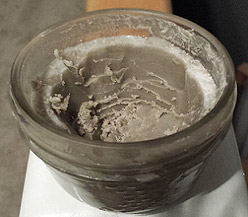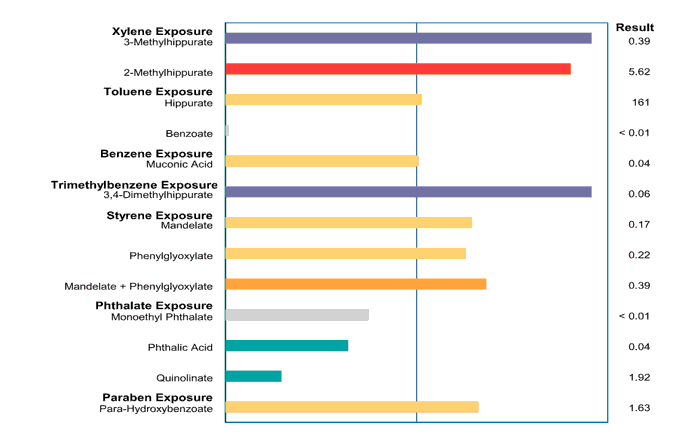Often when we pick out health and beauty products we ask questions like: does this smell good? Is the packaging appealing? Will it work effectively for my skin or hair? These are all viable questions to ask; however, one large component of our beauty purchases that often goes overlooked is the ingredients that have been used to make the product. There are a lot of sneaky (and harmful) chemicals that make their way into many beauty products that can cause health problems immediately or down the road. If you want a list of chemicals to avoid while shopping this holiday, you’ve come to the right place! Continue reading to learn more.
What chemicals are in the products you’re giving and receiving?
Whether you are shopping for someone else, creating something by hand, or just pampering yourself this time of year, there are some important environmental and health factors to consider when choosing self-care products and gifts. I recently spent some time speaking with students at a health fair about hormonal health and it brought up many conversations about what’s really in our beauty products. What is in these products, we are putting on our skin, and their ingredients absolutely have the potential to harm our health. So it’s up to us to get informed about what these chemicals are, what they do, and how to avoid them. With the holidays right around the corner and many of us giving or receiving personal care products, I’m going to challenge you to become a more conscious shopper or, better yet, learn how to make your own products!
The average adult uses nine personal products and more than a quarter of women use more than 15 products per day! By the time you’ve reached for your morning coffee, you may have already applied over 120 chemicals to your face, body and hair. The truth is we have all become guinea pigs in a vast and uncontrolled experiment. We have to update our concept of pollution from being something ‘out there’ like car exhausts and smoke stacks to also include the pollutants we’re exposed to when we’re in our own homes. This chronic low level toxin exposure means the effects of pollutants can accumulate and contribute to chronic symptoms, conditions and diseases.
Let’s have a look at some of the top personal care product chemicals:
| Chemical | Common products | Health risks & outcomes |
| Parabens | Moisturizers, cleansers, shampoos, conditioners, sunscreens, perfumes and toothpastes. | Parabens easily penetrate the skin and can mimic estrogens. Their estrogenic effect has a potentially disruptive effective on the endocrine system of both men and women. Allergic skin reactions have also reported. |
| Dibutyl Phthalate | Nail polish & nail products. Phthalates in general are used as plasticizers (in plastics). | Endocrine disrupting chemicals which can cause damage to unborn children resulting in deficits in behavior and cognition. |
| Fragrance or Parfum | Widely used even in some products marketed as “unscented” (often the last ingredient). | Mixture of chemicals that can trigger allergies and asthma. Linked to cancer and neurotoxicity. |
| Sulfates (sodium laurel sulfates) | Foaming agents found in shampoo, soap, bubble bath. | SLE’s can be contaminated with 1,4-dioxane, which may cause cancer and damage liver. |
| Coal tar dyes | Look for P-PHENYLENEDIAMINE in hair dyes, and colours identified as “C.I.” followed by five digits in other products. | Potential to cause cancer and can be contaminated with heavy metals toxic to the brain and nervous system. |
| Cyclomethicone and siloxanes | Widely used in moisturizer, makeup, hair products. | May interfere with hormone function and damage the liver. |
| Formaldehyde-releasing preservative | In creamy and foaming products such as moisturizer, shampoo. | Can react to form cancer-causing nitrosamines. Look for: DMDM hydantoin, diazolindyl urea, imidazolidinyl urea, methenamine or quarternium-15. |
Be sure to check this out: Sustainable Shopper’s Guide to a Dirty Dozen Ingredients to Avoid in your Cosmetics.
How can I protect myself and others from harmful chemicals when making product choices?
When it comes to purchasing products, buy from companies that you know and trust. Read their mission statements and core values and ask yourself if those values line up with your own. A good place to start is taking a look at how your current products measure up. Check out the Environmental Working Group’s personal care product database. Type in the product you’re interested in and look at its toxicity rating per ingredient. If you don’t like what you read, steer clear in the future! I have no association with these companies: I just like what they stand for and I use their products myself: http://www.mattercompany.com/philosophy.html and http://www.badgerbalm.com/s-4-philosophy-of-formulation.aspx. I often use http://www.well.ca to order products unavailable in stores in Calgary.
Over the years I have experimented with lots of different natural products and created even more. It’s fun and rewarding to create your own products, put them in safe glass jars to make beautiful and personalized gifts. One year, I made Arnica oil for muscular pain relief, lip ‘plumping’ balm and face scrubs.  My mom is still obsessed with my lip plumping balm – she asks for a new one every year (the secret ingredient is cinnamon oil and cayenne powder!) By far my favourite homemade product is my deodorant/antiperspirant. I have tried probably 10 different natural and homemade deodorants, some of which worked for a month or so and stopped working, while others just didn’t cut it from the beginning. I actually had been doubting if I’d ever be able to find a good natural deodorant. Not only does this deodorant work consistently, it’s also very moisturizing for the skin and detoxifying for the body. Check out the recipe I used here. (I prefer to use a wooden spoon to mix it and I added tea tree oil as my essential oil).
My mom is still obsessed with my lip plumping balm – she asks for a new one every year (the secret ingredient is cinnamon oil and cayenne powder!) By far my favourite homemade product is my deodorant/antiperspirant. I have tried probably 10 different natural and homemade deodorants, some of which worked for a month or so and stopped working, while others just didn’t cut it from the beginning. I actually had been doubting if I’d ever be able to find a good natural deodorant. Not only does this deodorant work consistently, it’s also very moisturizing for the skin and detoxifying for the body. Check out the recipe I used here. (I prefer to use a wooden spoon to mix it and I added tea tree oil as my essential oil).
In the photo above, you can see how mine sits during the Calgary winter.
As a Naturopathic Doctor in Calgary, I’m thankful to have a wonderful laboratory in the city that provides environmental pollutant profiles which provide insight into the chemical body burden of my patients. This test is particularly useful when searching for explanations for infertility in both men and women. Below is a portion of a sample report, the closer to the right, the greater the body burden. These pollutants are a real concern for many of my patients, and utilizing a test like this sheds light on not only which products need to be eliminated but also how we will target these chemicals through a detoxification process.

Thanks for reading and I hope you enjoy a fun and chemical-free holiday!
Are you interested in learning exactly what chemicals are affecting you in your day-to-day life? Book a treatment with me, Naturopathic Doctor Stephanie Bristow, and I can perform the necessary tests and help you do the work required to get to the root of your health issues.
